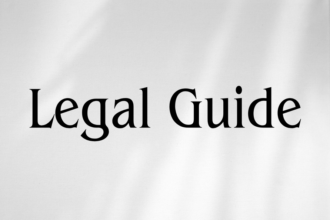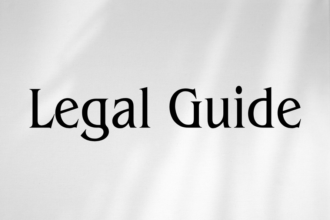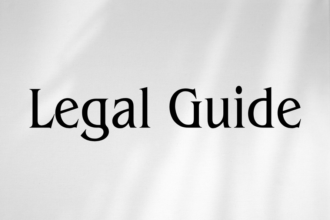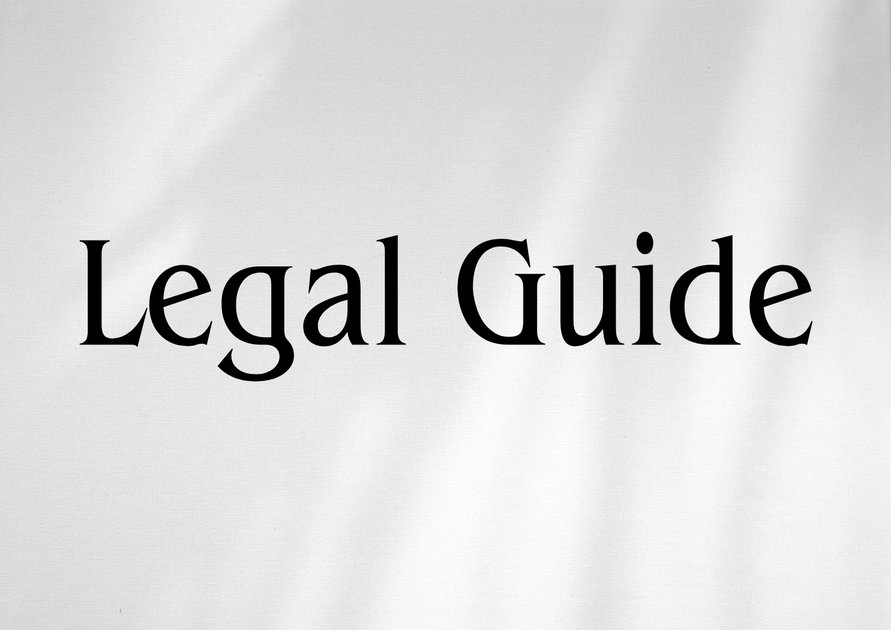Introduction: The Strategic Significance of Ground Handling Licensing and Liability in UAE
The United Arab Emirates continues to assert its position as a global aviation hub, with airports in Dubai, Abu Dhabi, and Sharjah collectively servicing tens of millions of passengers and critical cargo annually. Amid this dynamic growth, ground handling operations play a foundational role in maintaining safety, efficiency, and regulatory compliance. Licensing and liability issues in ground handling have thus taken on increased prominence, especially as new regulations under Federal Law No. 20 of 2022 and Cabinet Resolution No. 109 of 2023 have reshaped compliance expectations and risk management strategies for stakeholders. For airlines, ground service providers, and airport operators, understanding the evolving legal framework and liability landscape is not just a regulatory imperative—it is key to safeguarding operational continuity and reputational value in the UAE’s competitive aviation market.
This article delivers an in-depth legal analysis of ground handling licensing and liability requirements in the UAE. Drawing on the most recent statutory updates and official guidance, it offers practical consultancy insights for aviation businesses, executives, compliance officers, and legal practitioners operating in or engaging with the UAE aviation sector.
Table of Contents
- Overview of UAE Ground Handling Law and Regulatory Framework
- Ground Handling Licensing Requirements in UAE
- Legal Liability in Ground Handling Operations
- Comparison of Old and New Laws: Key 2025 Regulatory Developments
- Practical Insights: Navigating Compliance and Managing Risk
- Case Studies and Hypothetical Scenarios
- Penalties for Non-Compliance and Enforcement Trends
- Best Practices and Compliance Strategies for UAE Aviation Stakeholders
- Conclusion: Preparing for the Future of Ground Handling Regulation in UAE
Overview of UAE Ground Handling Law and Regulatory Framework
The Regulatory Landscape
The regulation of ground handling in the UAE is overseen primarily by the General Civil Aviation Authority (GCAA), empowered by Federal Law No. 20 of 2022 on Civil Aviation. Supplemented by Cabinet Resolution No. 109 of 2023 and GCAA regulatory circulars, the current framework codifies licensing standards, operator obligations, safety and security requirements, and liability limitations.
The GCAA is responsible for:
- Issuing and revoking ground handling licenses
- Setting technical and operational standards
- Supervising safety and liability arrangements
- Conducting audits, oversight, and enforcement actions
Ground handling regulation covers an array of services, including aircraft marshalling, passenger and cargo handling, fueling, cleaning, and catering. Given the complexity of these activities, robust legal rules are essential to mitigate risks and uphold the UAE’s international aviation commitments, including those to the International Civil Aviation Organization (ICAO).
Legal Sources
- Federal Law No. 20 of 2022 on Civil Aviation
- Cabinet Resolution No. 109 of 2023
- Ministerial Guidelines on Ground Operations (GCAA, 2024)
- Airport-specific regulations (e.g., Dubai Civil Aviation Authority rules)
Ground Handling Licensing Requirements in UAE
Who Needs a License?
Under UAE law, no entity may perform ground handling operations at a UAE airport without first obtaining a Ground Handling License from the GCAA. This applies to:
- Specialist ground service providers
- Airlines undertaking their own ground handling (self-handling)
- Cargo and freight forwarders operating airside
Licenses are required for both airside and landside operations, ensuring that all parties engaging directly with aircraft, airport infrastructure, or passenger/cargo flows are within the regulatory perimeter.
Licensing Process
The application process is set out primarily in Cabinet Resolution No. 109 of 2023, with detailed procedures formalized through GCAA guidance. The process involves:
- Submission of detailed business and operational plans
- Demonstration of technical capability and qualified personnel
- Proof of appropriate liability insurance coverage
- Evidence of financial solvency and security backing
- Compliance with safety management systems (SMS) and quality assurance standards
Licenses are typically granted for a fixed term (usually 2–5 years), subject to renewal. The GCAA may suspend, revoke, or refuse renewal for non-compliance, safety breaches, or failure to maintain requisite insurance.
Application Documentation
- Commercial registration and business license copies
- Training certification for staff
- Operational manuals in accordance with ICAO Annex 19
- Evidence of insurance (minimum indemnity limits specified by GCAA)
- Security clearance for key personnel
Licensing Fees and Official Timelines
Licensing fees are prescribed under the Cabinet Resolution, with differentiated rates for major, regional, and specialist airports. The GCAA targets a 60-day review timeframe from submission of a complete application, but actual processing times may vary based on completeness and complexity.
Key Regulatory Obligations for Licensees
- Maintain valid and adequate insurance
- Adhere strictly to published safety and operational standards
- Cooperate with audits and GCAA inspections
- Notify the authority of any incidents or material changes in operations
- Ensure all staff meet mandatory training and security requirements
Legal Liability in Ground Handling Operations
Statutory Basis of Liability
Ground handling liability in the UAE flows from a combination of statutory rules and contractual commitments. Under Federal Law No. 20 of 2022 and supporting GCAA regulations, licensees are expressly liable for damages arising from:
- Bodily injury or death of passengers or airport personnel
- Damage to aircraft, baggage, or cargo during ground operations
- Losses arising from failure to comply with safety requirements
- Environmental liability (e.g., fuel spills or hazardous waste incidents)
Liability may be joint and several where multiple parties participate in ground handling activities. This is especially relevant in large airports where subcontracting is common. Contractual risk allocation through indemnity or limitation clauses is permitted but subject to oversight and restrictions under UAE law and GCAA policy.
Insurance Requirements
Ground handling licensees must procure and maintain insurance with minimum coverage levels set by the GCAA based on the size, nature, and risk profile of operations. This typically includes:
- Third-party liability
- Aircraft liability
- Cargo and passenger liability
- Environmental liability (where applicable)
Failure to maintain adequate insurance is grounds for immediate revocation of the ground handling license.
Liability Caps and Exclusions
The GCAA prescribes maximum limits of liability for certain categories of claims, harmonized to some extent with the Montreal Convention 1999 (to which UAE is a contracting state) but also reflecting domestic legal priorities. Notably, where harm results from gross negligence or deliberate misconduct, contractual caps may not be enforceable.
Comparison of Old and New Laws: Key 2025 Regulatory Developments
Recent updates through Federal Law No. 20 of 2022 and Cabinet Resolution No. 109 of 2023 represent a significant evolution of UAE ground handling law, with implications for both liability exposure and licensing obligations.
| Feature | Previous Law | Current Law (2022/2023 Updates) |
|---|---|---|
| Licensing Authority | GCAA (earlier under Civil Aviation Law No. 20 of 1991) | GCAA (with enhanced oversight and clearer powers post-Federal Law No. 20/2022) |
| Scope of License | Primarily airside only; less clarity on landside activities | Explicit coverage of airside and landside; unified licensing for all ground services |
| Insurance Requirements | General insurance required; amount discretionary | Strict minimum coverage levels defined by GCAA |
| License Duration & Renewal | Subject to renewal, but without rigid renewal criteria | Fixed duration (2–5 years) and formal review process for renewal/revocation |
| Liability Regime | Hybrid of general civil code and GCAA notifications | Principles harmonized with Montreal Convention; explicit liability for gross negligence and environmental harm |
| Penalties for Non-Compliance | General administrative penalties, rarely enforced | Expanded range of fines, suspension/revocation powers, and public reporting |
| Training & Safety | ICAO recommendations, but limited enforcement | Mandatory compliance with GCAA-approved training and safety management systems |
Visual Suggestion
Consider a process flow diagram illustrating the step-by-step licensing journey, highlighting key decision points and risk management milestones.
Practical Insights: Navigating Compliance and Managing Risk
Key Compliance Challenges for Aviation Stakeholders
- Documentation Burden: Applicants must maintain and update voluminous documentary evidence, including incident logs, training records, SMS audits, and insurance certificates.
- Dynamic Risk Environment: Constantly evolving operational scenarios—such as aircraft movement surges or new security threats—require agile internal compliance protocols.
- Cross-Border Collaboration: Many ground handlers are subsidiaries of global companies, introducing additional obligations under international agreements and dual regulation issues.
- Interface with Airport Authorities: Stakeholders must reconcile GCAA requirements with local airport rules (e.g., DCAA in Dubai, Abu Dhabi Airports Company policies).
Risk Management Strategies
- Integrated Compliance Management: Implement a unified compliance dashboard, automating renewal reminders and tracking evolving GCAA standards.
- Insurance Optimization: Conduct regular insurance adequacy reviews; work with brokers fluent in UAE aviation law to ensure all categories of liability are covered.
- Staff Training and Credentialing: Develop recurring training schedules and competency assessments based on GCAA/ICAO guidelines.
- Incident Response and Notification: Prepare templates for mandatory GCAA notifications (e.g., breach, accident, or material change).
Internal Audit and Self-Inspection
Regular internal audits are recommended (at least annually), mirroring the GCAA’s own inspection criteria, with a focus on:
- Adherence to safety management systems (SMS)
- Maintenance of valid and updated licensing/insurance
- Staff training, certification, and documented competencies
- Incident reporting and lessons learned
Case Studies and Hypothetical Scenarios
Case Example 1: Multinational Ground Handler in Dubai International Airport
Scenario: A global ground handling corporation secures a license to operate at DXB, setting up a UAE subsidiary. Six months in, an aircraft wing is damaged during pushback, resulting in significant repair costs and a temporary closure of the stand.
Legal Analysis: Under Article 43 of Federal Law No. 20/2022, the UAE subsidiary, not the foreign parent, is primarily liable. Insurance covers the repair, but GCAA imposes a compliance audit revealing gaps in staff training documentation. The licensee avoids suspension due to prompt corrective action and transparent reporting to GCAA within the 24-hour prescribed deadline.
Case Example 2: Non-Compliance with Safety Management System (SMS)
Scenario: An independent UAE-based ground handler undertakes self-audits but omits reporting several minor incidents. A GCAA inspection uncovers these omissions. Under the 2023 Cabinet Resolution, failure to report incidents is itself a breach, subject to fines and possible suspension of the license. Remedial training and process upgrades are ordered as conditions of continued operation.
Case Example 3: Cross-Border Operations and Liability Interface
Scenario: A GCC-based airline provides self-handling at Sharjah Airport and subcontracts cargo operations to a local ground handler. During operations, dangerous goods are misdeclared, causing a hazardous spill. Both the airline and the ground handler face investigation. Under the joint liability provisions of the law, both may be held responsible, with adverse implications for their respective licenses and insurance premiums.
Penalties for Non-Compliance and Enforcement Trends
Sanctions Matrix
| Violation | Penalty (Pre-2022) | Penalty (2022/2023 Onward) |
|---|---|---|
| Operating without a valid license | Fine up to AED 100,000 | Fine up to AED 1,000,000 + criminal referral + aircraft impoundment |
| Failure to maintain insurance | Administrative warning or suspension | Immediate suspension + mandatory financial guarantee |
| Non-compliance with SMS/training requirements | Administrative caution | Escalating fines (AED 50,000–250,000) + possible license suspension |
| Failure to report incidents | Warning | Fine (AED 50,000–150,000) + increased scrutiny or revocation |
Enforcement Developments
The GCAA now routinely publishes enforcement actions on its portal, signaling a strategic shift toward transparency and deterrence. Repeat violations may be escalated to criminal investigation under Federal Law No. 31 of 2021 (the UAE Penal Code), if gross negligence or willful misconduct is found.
Visual Suggestion
A compliance checklist infographic would help summarize the core requirements for ongoing legal operation.
Best Practices and Compliance Strategies for UAE Aviation Stakeholders
Comprehensive Approach to Licensing Compliance
- Proactive Engagement with Authorities: Develop open communication channels with GCAA compliance officers.
- Document Retention: Maintain a secure, digital archive of all application, audit, and incident documentation for at least five years.
- Legal Review and Contract Management: Ensure all ground handling agreements undergo comprehensive legal review to clarify risk allocation, indemnities, and notification requirements.
- Periodic Risk Assessments: Employ external consultants for independent review of SMS and insurance compliance at least biennially.
Future-Proofing: Anticipating Regulatory Change
- Monitor regular GCAA and Cabinet updates for potential changes in licensing scope, insurance requirements, or liability allocation.
- Participate in GCAA stakeholder consultation forums and industry associations.
- Invest in advanced training for staff, including periodic refreshers on legal and regulatory updates.
Conclusion: Preparing for the Future of Ground Handling Regulation in UAE
The legal environment for ground handling in the UAE has seen transformative change with the introduction of Federal Law No. 20 of 2022 and Cabinet Resolution No. 109 of 2023. Licensing and liability rules now demand a far higher standard of diligence, risk management, and documentation. Aviation stakeholders must move beyond minimum compliance, adopting proactive governance, rigorous training, and comprehensive insurance strategies to mitigate evolving risks. As the UAE reinforces its commitment to safest-in-class aviation standards, businesses should view compliance not as a burden, but as a strategic enabler of long-term growth and international credibility.
Looking ahead, anticipated regulatory developments and increased public enforcement will make robust compliance systems, transparent reporting, and demonstrable safety culture essential. By following industry-leading practices and seeking informed legal advice, UAE aviation stakeholders can remain resilient and competitive in a fast-changing legal landscape.




